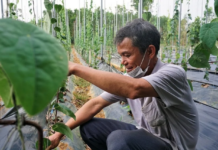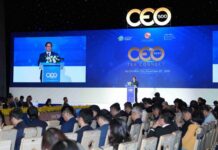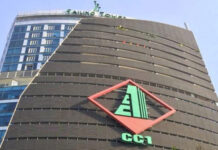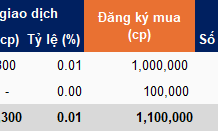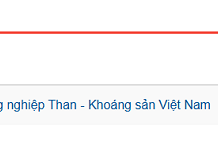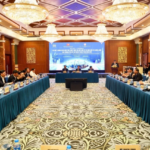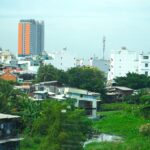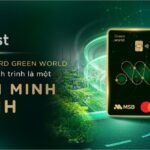The forum, directed by the People’s Committee of Ho Chi Minh City, is chaired by the Center for the Fourth Industrial Revolution in Ho Chi Minh City (HCMC C4IR). It is coordinated with various city agencies, organizations, and the World Economic Forum (WEF), along with central ministries and sectors.
The forum aims to serve as a high-level policy dialogue space between the Vietnamese Government, the city, international organizations, the business community, and academia. It fosters knowledge sharing, initiatives, and practical solutions to promote public-private partnerships, green and digital transformation, and the development of a smart and sustainable economy.
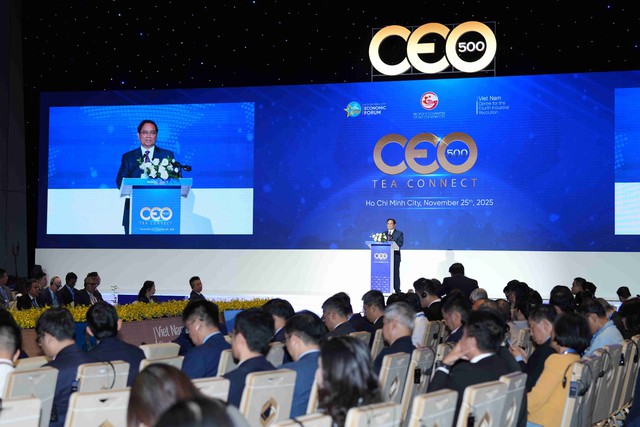
Prime Minister Pham Minh Chinh oversees the program.
As part of the event, the CEO500 – TEA CONNECT program, themed “Ho Chi Minh City: Towards an International Digital Metropolis,” has become a key highlight of this year’s forum.
Representing Nam A Bank, Mr. Vo Hoang Hai, Deputy General Director, was a key speaker in this important dialogue session. He presented notable proposals for green financial products to attract foreign investment to the Ho Chi Minh City International Financial Center. This is seen as a critical factor in realizing the vision of making Ho Chi Minh City a regional financial hub.
Amid Vietnam’s green transition efforts, Nam A Bank’s proposals gained significant attention by outlining three key financial product pillars to unlock foreign capital: Green Supply Chain Finance, Carbon Credit Trading, and Environmental Commodity Trading.

Mr. Vo Hoang Hai, Deputy General Director of Nam A Bank, speaks at the program.
Breakthrough with Green Supply Chain Finance (G-SCF)
Mr. Vo Hoang Hai emphasized the importance of Green Supply Chain Finance (G-SCF). He explained that this solution provides working capital tied to ESG (Environmental, Social, and Governance) criteria, offering interest rate benefits and credit limits to suppliers meeting sustainability standards.
Highlighting its appeal to foreign capital, he noted that G-SCF aligns with global ESG standards set by the International Finance Corporation (IFC), Asian Development Bank (ADB), and other development financial institutions (DFIs) and international banks.
This structure reduces risk by leveraging upstream enterprises and has significant expansion potential in Vietnam’s key export sectors.
Notably, Mr. Hai proposed integrating Blockchain, IoT, and AI for ESG scoring and traceability, advocating for a “sandbox” mechanism for green SCF platforms in Vietnam to align with international standards, such as MAS–BNP Paribas models, IFC’s GSCF programs, and the EU’s sustainable factoring models.
Billion-Dollar Opportunity in Carbon Credit Markets
The second pillar is Carbon Credit Trading, a market with assets valued in the billions of dollars and high demand from multinational corporations and climate funds.
“Developing a national carbon trading platform for high-quality credits not only meets FDI enterprise needs but also opens collaboration opportunities with partners like Singapore under Article 6 of the Paris Agreement, enabling voluntary cooperation and carbon credit transfers to achieve greenhouse gas reduction targets,” Mr. Hai emphasized.
To realize this, he proposed using satellite technology and IoT for measurement, reporting, and verification (MRV), directing capital toward renewable energy and regenerative agriculture, positioning Vietnam as a regional carbon hub.
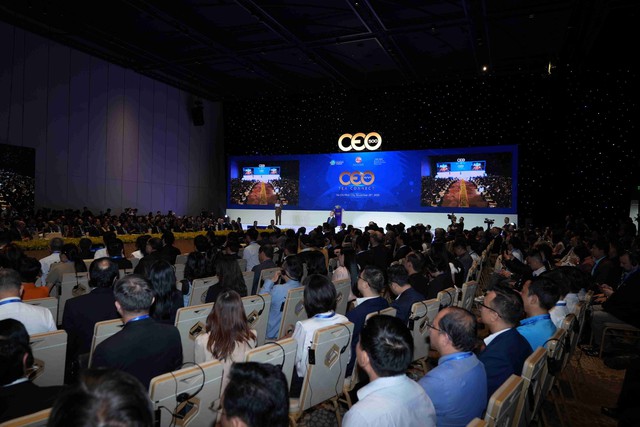
Overview of the 2025 Autumn Economic Forum.
Pioneering Environmental Commodity Trading
The third pillar is Environmental Commodity Trading, encompassing green metals, renewable energy certificates (REC & PPA), and sustainable agricultural products.
Leveraging Vietnam’s strengths in agriculture and renewable energy, Nam A Bank proposed pilot trading platforms for green coffee, low-carbon rice, and green metals. These sectors are in high demand from RE100 companies and global impact investment funds.
To stay ahead, Vietnam must swiftly adopt international standards, from the London Metal Exchange’s low-carbon metals to blockchain-based REC credits by SP Group, and traceability models like GrowForMe.
Mr. Vo Hoang Hai affirmed that these proposals are not just product-focused but part of a comprehensive strategic vision. Successfully implementing these three pillars will effectively mobilize cross-border capital, supporting the development of the Ho Chi Minh City International Financial Center as a green financial hub.
This is essential for enhancing Vietnam’s reputation in the global ESG market, building a transparent digital ecosystem, and supporting the government’s Net Zero goal by 2050.
Unlocking 10% Growth in the Digital Age: Strategic Roles for State-Owned Enterprises
In the proposed Political Report for the 14th National Congress, two key concepts—”state-owned economy as the leading force” and “private economy as the most important driving force”—are identified as the dual pillars of the economy. However, ensuring seamless coordination between these two economic components to achieve double-digit growth over the next five years remains a complex challenge.
Unlocking Innovation: How Can Ho Chi Minh City Become a Living Lab for New Economic Models?
Ho Chi Minh City has been entrusted with a unique role as the primary “policy laboratory” for green economy, green finance, and smart urban development. This distinction is both an honor and a significant test of the city’s ability to refine legal frameworks and ensure effective implementation.


